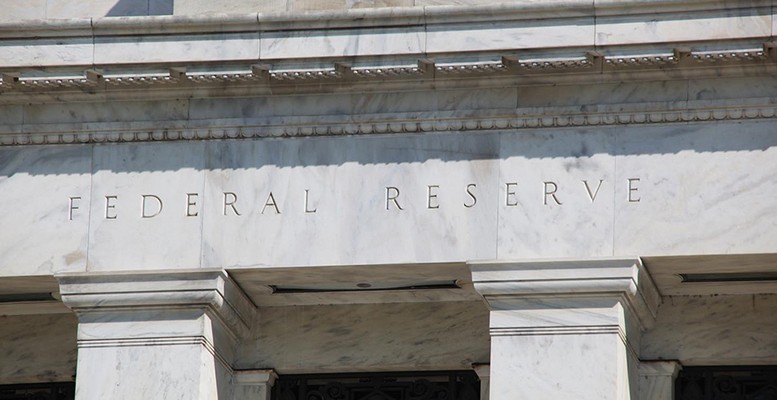There is a 100% possibility that the Federal Reserve will raise rates today. As a result, the interest rate outlook won’t be the subject of debate and the interest, more than ever, will be on how the Fed is going to manage its balance sheet. And this means that Yellen’s intervention in Wednesday’s meeting will have more significance.
In May, “almost all the (FOMC) members indicated that while the economy and the trend in the Fed funds rate continues as is expected at the momento, it’s likely it will be convenient to start reducing the Federal Reserve’s securities holdings this year” and the minutes of that meeting included a fairly advanced proposal to this end. Today’s meeting seems then an ideal opportunity for continuing to debate and polish up this proposal.
The system put forward six weeks ago would consist in starting to adjust the Fed’s balance sheet by tapering the reinvestments, firstly leaving aside those related to issuances where there is less volume. So a limit would be established, up to which the refunds on securities would not be reinvested. This would only be done in every case where the limit was exceeded. Thus, as the limits increase, the reinvestments would decrease. At the beginning, these limits would be low then raised every three months over a fixed period of time until reaching a valuation which finally allows for the normalisation of the balance sheet.
The previous proposal implies, indirectly, a passive reduction of the balance sheet. This was what Jerome H. Powell proposed in an interesting speech entitled: “Thoughts on the normalisation of monetary policy.” The renowned governor of the Fed system also put emphasis on an issue which we have already mentioned: “The normalisation of the balance sheet will start only once the normalisation of the Fed funds’ rate is well on the way. The majority of the FOMC members think this condition will be fulfilled at the end of this year, if the economy continues totally on the same path.”
The last thing proposed by Powell and the Fed is that, in the long-term, the institution’s balance sheet is no bigger than is necesary in order to regulate monetary policy under the chosen framework. The issue is that not just policy will guide the reduction in the balance sheet from the current $4.5 trillion. The demand which bonds represent for the Fed need to be taken into account, as well as the dollars in circulation or bank reserves.
In his speech, Powell recalled that the almost $3.5 trillion dollar increase in the Fed’s assets compared with the spring of 2007 had seen a corresponding rise in its liabilities: $2.2 billion in commercial banking reserves, $700 billion in currency in circulation and $500 billion under the heading of other bond reserves.
So now the question is what should we expect from these items in the coming years and the answer is not easy. With regard to currency in circulation, this has doubled over the last 10 years to around $1.5 billion, and the strength of the demand for dollars (both on a local and global level) leads us to expect that the upward trend will continue. Thus the biggest cuts should be in bank reserves and other reserves. That said, the levels of reference will undoubtedly be much higher than in the past. Particularly the reference levels for the banks, faced with a greater need for having secure assets and in light of the regulatory changes they have lived through. In other words, as explained by Intermoney analysts:
As Powell clearly implied, the changes undergone will mean in the future that the Fed’s balance sheet will be much bigger than in the past and we should forget the $8.25 billion which it had at end 2007. At that time, this figure represented 6.09% of GDP and if this percentage was maintained, the current balance would now stand at $1.16 billion. So, although it’s a simplistic one, the conclusion we arrive at is that the balance should be bigger than it was in the past.
As we mentioned, the key will be the demand for more cash in circulation and, above all, bank reserves. With respect to the first point, Powell extrapolated the growth over the last 10 years at annual compound rate of 6.8% and estimated that this liability would be around $2 billion in 2022 and $2.8 billion in 2027. So the problem is with the reserves, the future of which is more uncertain, and different hypotheses are needed, as we can see in graphic 2. However, considering the two most prudent scenarios in line with a level of reserves of $100 billion and $600 billion, the reasonable size of the Fed’s balance sheet would be between $2.4 trillion and $2.9 trillion in 2022.
The interesting exercise carried out by Powell draws the conclusion that the necessary adjustment to the balance sheet can be much more measured than discounted by a lot of people. This favours a “gradual and predictable” process, with the condition that there is no “material deterioriation in the economic outlook”.
The former is particularly important, given that the reduction in bond holdings on the part of the Fed will end up having an impact on financial conditions, with an effect similar to that from a hike in interest rates. That said, the Fed’s research “downplayed this issue”. It flagged a reasonable effect on the term premium, after estimating that the current unconventional policies were trimming 100 basis points off the term premiums. That said, “bringing forward the date to start the withdrawal of the Federal Reserve’s reinvestments, from mid-2018 to end-2017, should increase it between $2.4 billion and the term premium by just 5 basis points.”





